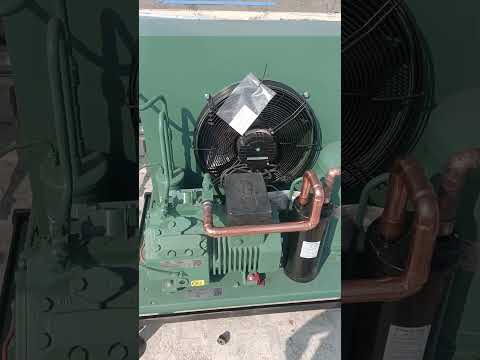Introduction
When it involves house appliances, the majority of us count on them every day. From the refrigerator that maintains our food fresh to the cleaning device that makes our laundry day a wind, these devices play an indispensable function in our lives. However, much like any type of mechanical gadget, they can run into problems from time to time. Understanding just how to fix usual appliance troubles can conserve you time, money, and the inconvenience of taking care of repair service specialists. In this guide, we will explore numerous appliances and their common problems, offering in-depth troubleshooting techniques you can utilize at home.
The Ultimate Overview to Troubleshooting Common Home Appliance Issues
Understanding Your Home appliances: Why Maintenance Matters
Every appliance is made with certain features in mind, and while they may seem robust, appropriate maintenance is essential for long life. Normal maintenance not just boosts efficiency however likewise stops minor concerns from intensifying into pricey repairs.
Key Benefits of Appliance Upkeep:
- Increased Life-span: Just like your vehicle needs regular oil changes, appliances take advantage of routine care. Energy Performance: Well-maintained home appliances eat much less energy, conserving you cash on energy bills. Safety Guarantee: Some appliance breakdowns can posture safety dangers; routine checks reduce risks.
Common Device Issues: An Overview
Before diving right into fixing techniques, allow's have a look at some usual issues connected with numerous family devices:
Refrigerator Not Cooling Washing Maker Won't Spin Oven Not Heating Dishwasher Leaking Dryer Not Drying Clothes Microwave Not HeatingEach of these issues has its very own set of reasons and solutions which we'll discover extensive.
Refrigerator Not Cooling down? Below's What You Can Do
Causes of Refrigeration Failure
A fridge that falls short to cool correctly can be as a result of numerous aspects:
- Blocked vents limiting airflow Dirty condenser coils impacting efficiency Faulty temperature level settings
Troubleshooting Steps
Check the Temperature Setups:- Ensure the thermostat is set properly (usually in between 37 ° F and 40 ° F). If it's too high or too reduced, change accordingly.
- Located at the back or below the refrigerator; clean any kind of dust or particles making use of a vacuum or brush. Dirty coils can trigger getting too hot and poor cooling performance.
- Check for fractures or dust on door seals. Clean them with cozy soapy water; if harmed, replace them.
- Strange sounds can suggest an issue with the compressor or follower motor. If you hear uncommon sounds like buzzing or clicking, further evaluation may be needed.
- If there's ice build-up in the fridge freezer compartment, your defrost system may be malfunctioning. Manually defrost and inspect components like the defrost timer and heater.
Washing Maker Will not Rotate? Troubleshoot This Issue!
Reasons for Spin Failure
When your washing equipment declines to spin efficiently, a number of culprits could washer dryer repair near me be involved:
- Unbalanced loads Clogged drainpipe pump filter Faulty cover switch
How to Detect and Deal With Spin Problems
Redistribute Laundry Tons:- Uneven loads can cause inequality; rearrange garments evenly around the drum.
- Locate the filter (normally at the front bottom) and clean any dust or particles obstructing it.
- Open and close the lid; if there's no click noise when shutting it might need replacement.
- A worn-out drive belt may slide during procedure; look for wear and change if necessary.
- If absolutely nothing else jobs, seek advice from a specialist as control board problems can require innovative troubleshooting.
# Frequently Asked Questions Regarding Appliance Troubleshooting
Q1: How do I recognize if my device problem requires professional help?
A1: If you have actually tried basic troubleshooting actions without success or if you observe indications of electrical damage (like stimulates), it's best to speak with an expert technician.
Q2: Can I do all repairs myself?
A2: While numerous minor problems are manageable at home with some guidance, particular repair work-- specifically those involving electrical components-- ought to be left to specialists for safety reasons.
Q3: What devices do I require for basic home appliance repair?



Q4: Exactly how typically should I preserve my appliances?
A4: A great guideline is to carry out maintenance checks every 6 months; nonetheless, high-use things like refrigerators may need more regular attention.
Q5: Are older devices worth repairing?
A5: It depends upon their age and problem versus replacement expenses; typically if repair work costs surpass half the price of a new unit, replacement is recommended.
Q6: What are some indications that an appliance needs replacing instead of repairing?
A6: Keep an eye out for relentless malfunctions regardless of repair services, considerable power inadequacy bring about high bills, or noticeable damage that impacts functionality.
Conclusion
In final thought, having a strong understanding of just how to fix typical home appliance issues can not just save you time yet additionally money in prospective repair service costs down the line. Whether it's your fridge stopping working to cool or your cleaning device refusing to rotate effectively; knowing what actions to take first makes all the difference. Bear in mind that while some issues are quickly fixable in the house through basic troubleshooting techniques-- others may need specialist treatment for safety reasons.
Utilizing this overview as a resource will empower you as a property owner by furnishing you with understanding regarding your devices' internal functions-- allowing you to keep them efficiently while lessening undesirable surprises!
By following these guidelines described in "The Ultimate Guide to Troubleshooting Common Appliance Issues," you'll locate yourself far better prepared for whatever difficulties your home appliances toss at you! So roll up those sleeves-- your handy skills await!